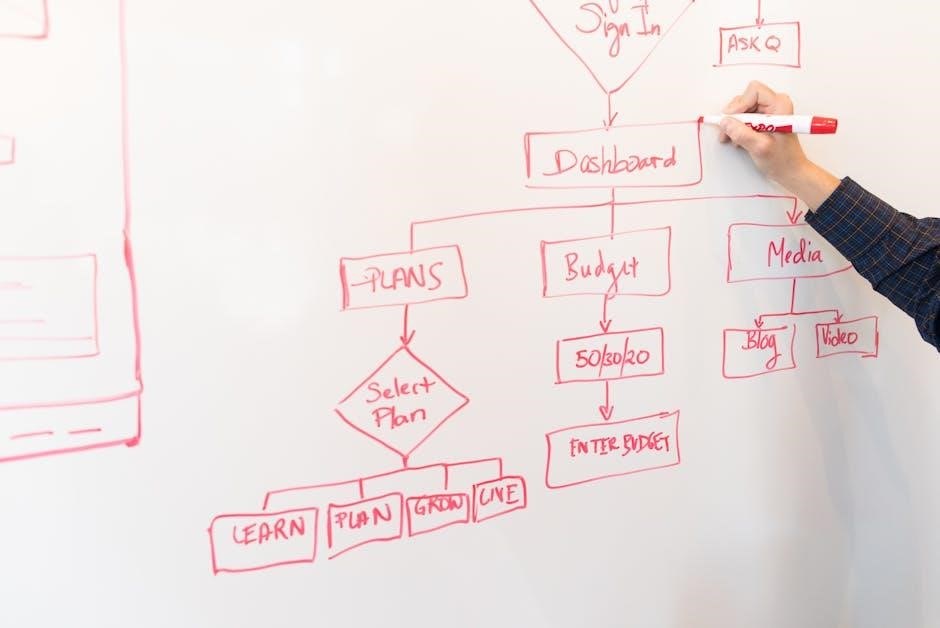Fishing in Final Fantasy XI is a popular activity offering relaxation, profit, and skill mastery. Equip a rod, bait, and use /fish to begin. It provides gil, crafting materials, and rare catches, while requiring patience and strategy. Perfect for casual players and dedicated anglers alike.
Why Fishing in FFXI is Important
Fishing in Final Fantasy XI is a valuable craft that offers multiple benefits. It provides a steady source of gil through selling caught fish, making it an excellent way to supplement your income. Additionally, fishing supplies materials for crafting, such as food or alchemy ingredients, which are highly sought after by players. Many high-demand fish can be sold for significant profits, especially rare or seasonal catches. Fishing also plays a role in completing certain quests and achieving skill mastery, which is rewarding for dedicated players. Beyond economics, fishing offers a relaxing and strategic gameplay experience, allowing players to unwind while contributing to their in-game progress.
Getting Started with FFXI Fishing
To begin fishing in Final Fantasy XI, you need a fishing rod and bait. Equip the rod in the ranged slot and bait in the ammo slot. Find a suitable fishing spot, such as a lake, river, or ocean, and use the /fish command or select the Fish option from the menu. Patience is key, as fishing can be slow, especially at lower skill levels. Consider using gear like the Pelican Ring or Fisherman’s Feast to boost skill gains. Start in areas with small fish to level up quickly and avoid breaking rods. As you progress, experiment with different rods and baits to optimize your fishing experience and efficiency.

Fishing Basics
Fishing in Final Fantasy XI involves using rods, bait, and lures to catch fish across Vanadiel. Weather, time, and moon phase affect fish behavior and availability. Success depends on rod strength, bait type, and player skill. Different fish sizes require appropriate rods to avoid breakage. Patience and strategy are essential for efficient fishing.
Choosing the Right Fishing Rod
Selecting the appropriate fishing rod in Final Fantasy XI is crucial for successful angling. Different rods suit various fishing conditions and fish sizes. The Mithran Rod is ideal for freshwater fishing, durable and effective for small fish. Composite Rods excel in saltwater and for larger catches, while Lu Shang’s Rod is perfect for small fish and is unbreakable. Budget-friendly options like the Clothespole Rod are available but less durable. Each rod has specific strengths, so choosing the right one enhances your fishing experience and prevents breakage. Rod selection significantly impacts fishing efficiency and enjoyment, making it a key consideration for players of all skill levels.
Understanding Bait and Lures
Bait and lures are essential for successful fishing in Final Fantasy XI. Sabiki Lures are ideal for saltwater fishing, catching multiple small fish at once, while Minnow Lures work best with Composite Rods for larger catches. Worm Lures are versatile and cost-effective, suitable for both freshwater and saltwater. Insect Balls are great for freshwater fishing, attracting species like Moat Carp. Sinking Minnows and Shrimp Lures are excellent for ocean fishing, especially when targeting specific fish. Choosing the right bait and lure combination maximizes catch rates and efficiency. Experimenting with different options helps master various fishing conditions and ensures a rewarding experience.

Leveling Up Your Fishing Skill
Mastering fishing in Final Fantasy XI requires patience and strategy. Enhance your skill by using optimal rods, baits, and locations. Consistency and the right gear yield progress.
Best Locations for Fishing Skill Ups
The best locations for leveling up your fishing skill in Final Fantasy XI vary depending on your skill level and the type of fish you’re targeting. For lower skill levels, areas like the docks in Mhaura and Selbina are ideal for catching smaller fish such as Yellow Globes and Bhefhel Marlins. These spots offer consistent bites and minimal risk of breaking your gear. As your skill progresses, consider moving to freshwater areas like the rivers in Windurst or the lakes near Bastok, where you can catch Moat Carp and other medium-sized fish. For higher skill levels, ocean fishing from the Selbina-Mhaura ferry or near the beaches of Al Zahbi can yield larger catches and better skill gains. Always choose locations that match your equipment and skill level to maximize efficiency.
Efficient Fishing Strategies
To maximize your fishing efficiency in Final Fantasy XI, focus on using the right bait for your target fish and location. Match your rod and lure to the water type—freshwater or saltwater—and the size of the fish you’re aiming to catch. Time your fishing sessions during optimal weather and moon phases, as these factors can increase your chances of landing rare or high-value fish. Equip gear like the Pelican Ring and consume Fisherman’s Feast to boost your skill gains and catch rates. Additionally, avoid using high-end gear for smaller fish to minimize equipment loss. Keep an eye on the in-game economy to sell your catches at the best prices, ensuring your fishing sessions are both productive and profitable.

Fishing Economy
The fishing economy in FFXI thrives on selling caught fish, crafting valuable items, and participating in contests. Players profit by trading fish for gil or using them in synthesis.
How to Make Gil Through Fishing
Fishing is a reliable source of gil in FFXI. By catching and selling fish to NPCs or via the auction house, players can generate consistent income. Rare fish, such as the Giant Catfish or Yellow Globe, fetch high prices. Crafting valuable items like sushi or bait also boosts profits. Additionally, participating in fishing contests rewards exclusive items and gil. Using the right rods and lures, like the Composite Rod with Minnows, increases catch rates and efficiency. Selling fish in stacks on the auction house maximizes earnings. Patience and strategy are key to maximizing gil through fishing.
Crafting and Selling Fish
Crafting and selling fish is a lucrative aspect of FFXI fishing. Players can craft items like sushi, sashimi, and bait using caught fish, enhancing their value. High-demand fish, such as Moat Carp and Giant Catfish, are ideal for crafting. Selling crafted goods or raw fish on the auction house yields significant gil. Utilizing stacks of 12 or more increases selling efficiency. Crafting requires skill, but high-quality lures and rods improve catch rates. This method provides consistent income and supports other in-game activities. Balancing crafting and selling maximizes profitability.

Advanced Fishing Techniques
Crafting and selling fish in FFXI offers a profitable way to utilize your catches. Players can craft items like sushi, sashimi, or bait, increasing fish value. Rare fish like Moat Carp or Giant Catfish are highly sought after for crafting. Selling raw fish or crafted goods on the auction house generates significant gil. Stacking items in multiples of 12 increases selling efficiency. Crafting requires skill, but using high-quality lures and rods improves catch rates. This method provides steady income and supports other in-game activities, making it a valuable skill for players. Balancing crafting and selling ensures maximum profitability in the FFXI economy.
Catching Rare and Legendary Fish
Catching rare and legendary fish in FFXI requires skill, patience, and the right equipment. Fish like the Giant Catfish or Golden Lobster are highly sought after for crafting and selling. Using specific lures, such as the Sinking Minnow or Sabiki Rig, increases the chance of landing rare catches. Time of day, weather, and location play a crucial role, as certain fish only appear under specific conditions. For example, the Golden Lobster is often found in the evenings near coral reefs. Equipping high-quality rods like the Composite or Lu Shangs Rod improves your chances of successfully reeling in larger fish. Rare fish can be sold for a premium or used in high-end crafting recipes, making the effort worthwhile for dedicated anglers.
Participating in Fishing Contests
Fishing contests in FFXI offer a fun and competitive way to test your angling skills. These events often reward participants with exclusive items or gil, making them a great way to earn rewards. To participate, players typically need to catch specific fish within designated areas and timeframes. The Pelican Ring, a valuable accessory, can sometimes be obtained through these contests. Contest rules vary, but fish are usually judged by size, rarity, or the number caught. Using the right gear and bait is crucial for success. Contests provide a unique challenge and opportunity to showcase your fishing prowess, adding an extra layer of excitement to the gameplay. They are a great way to engage with the community and earn rewards.





























































